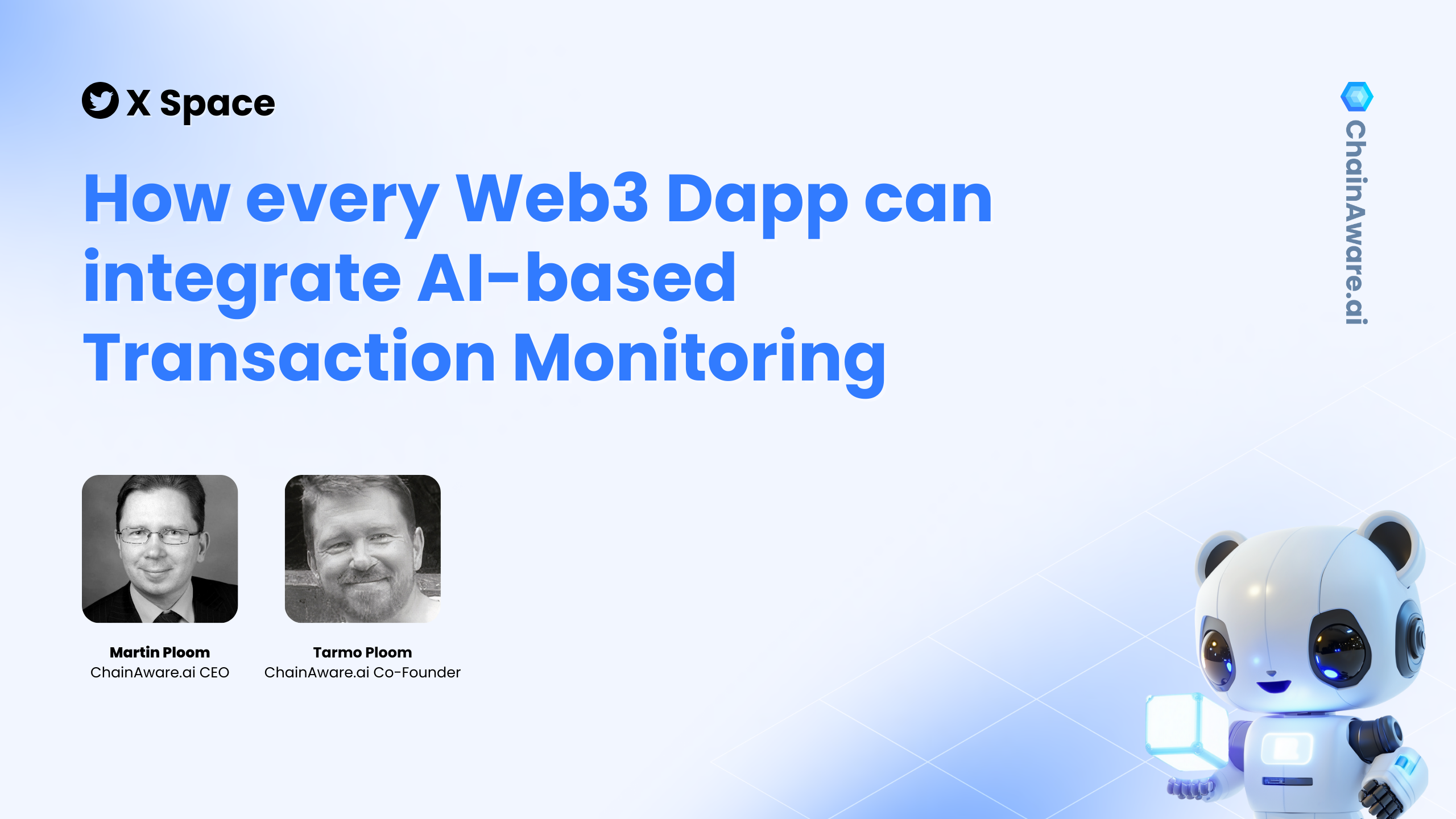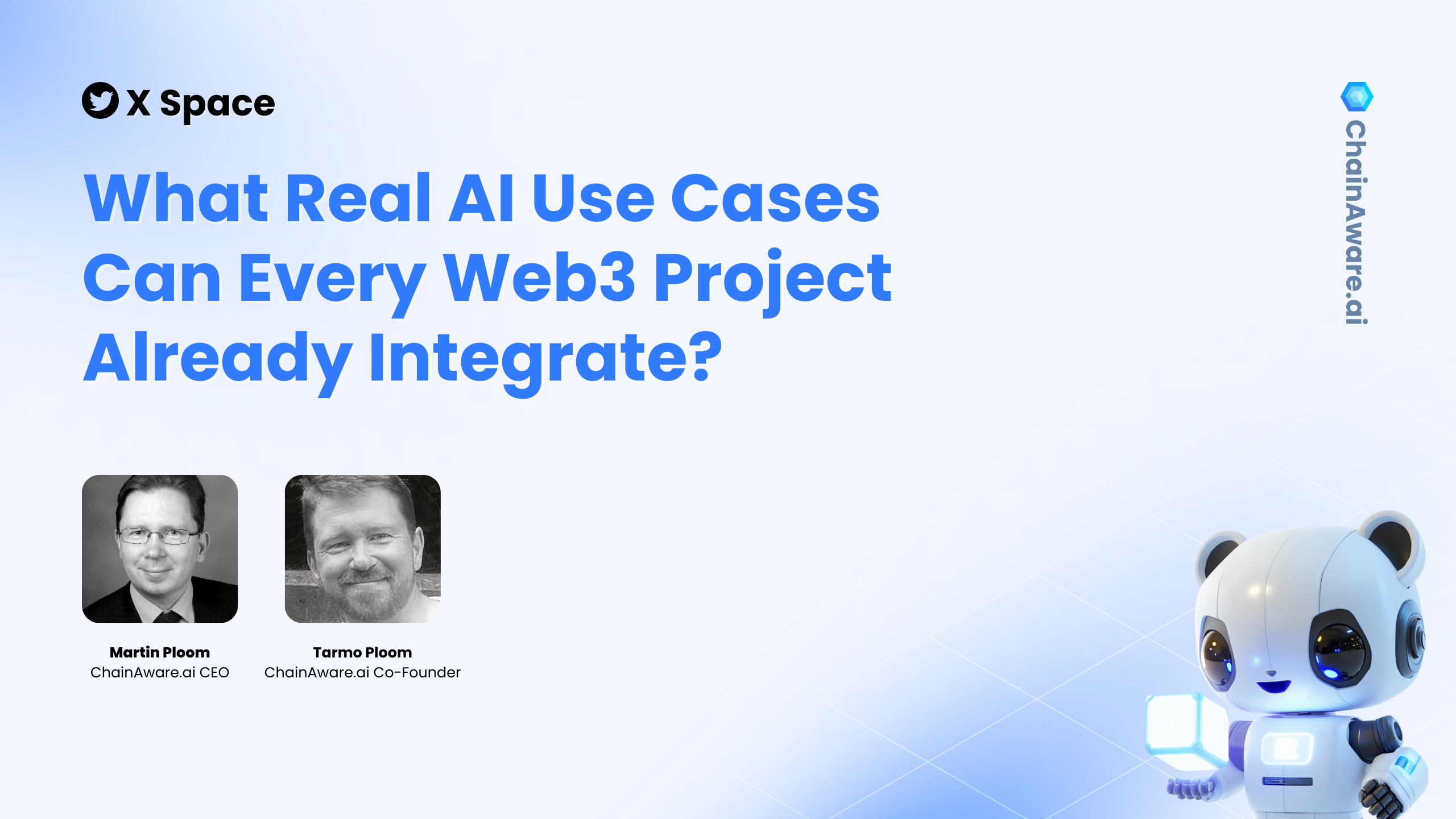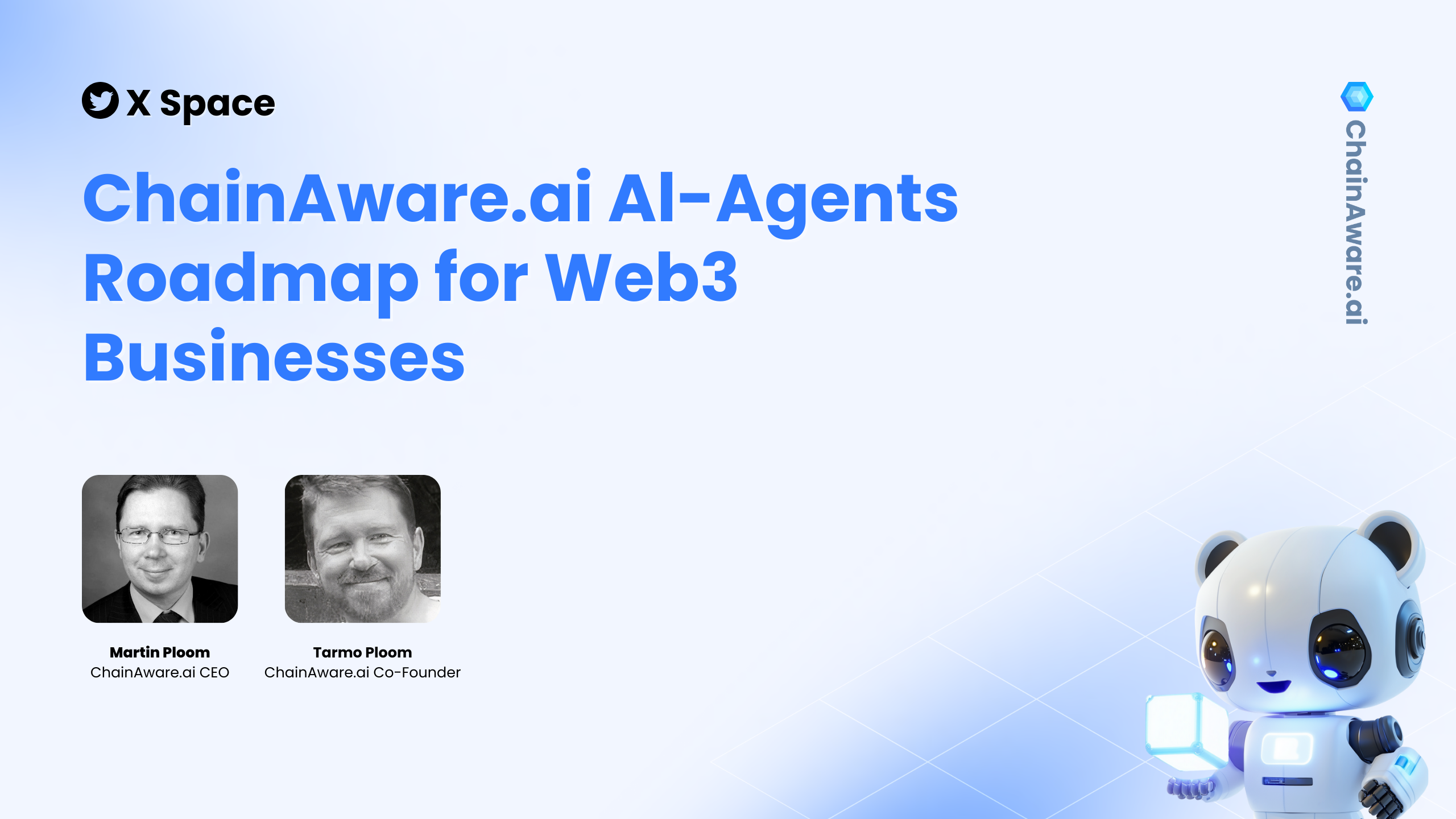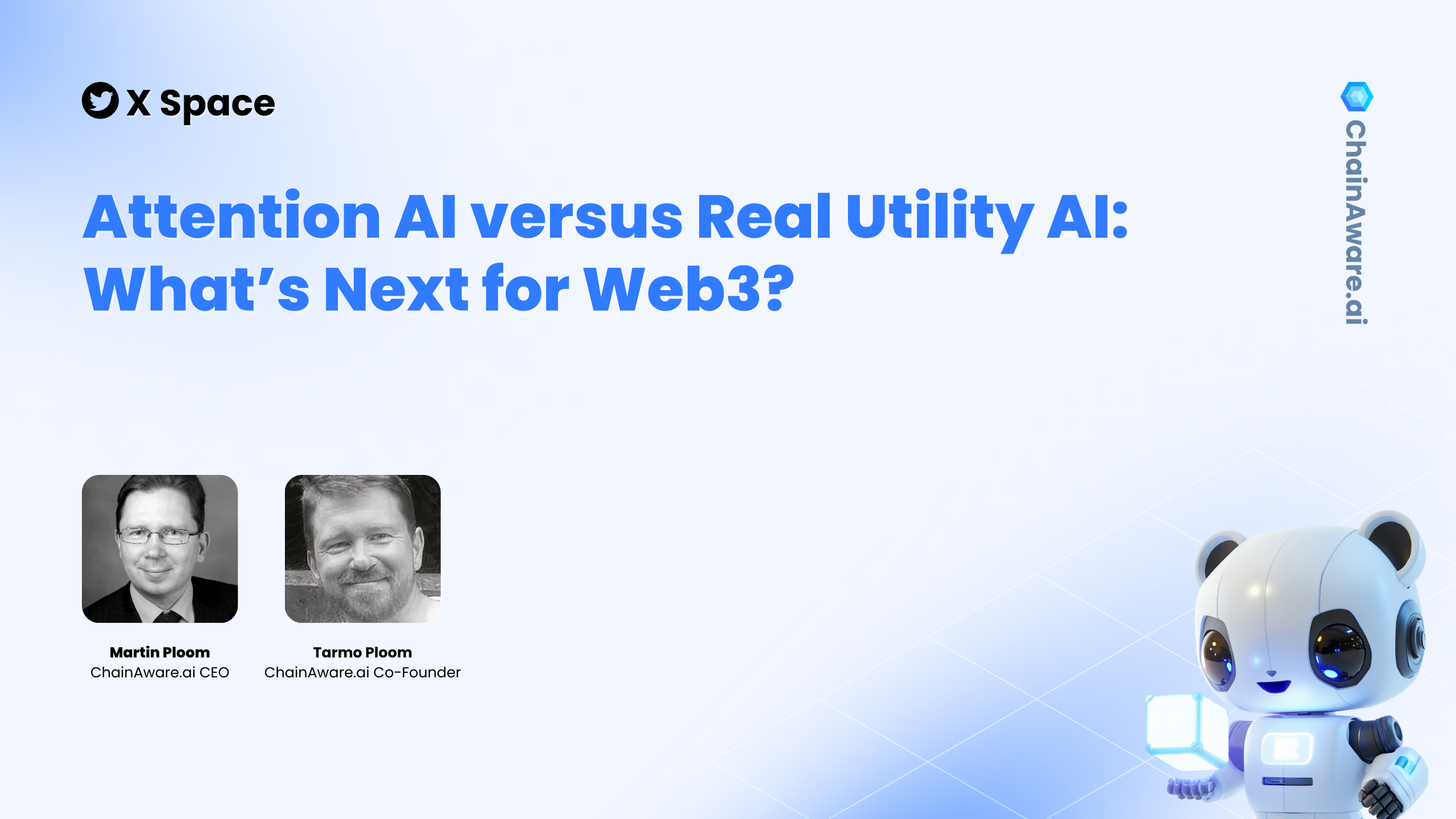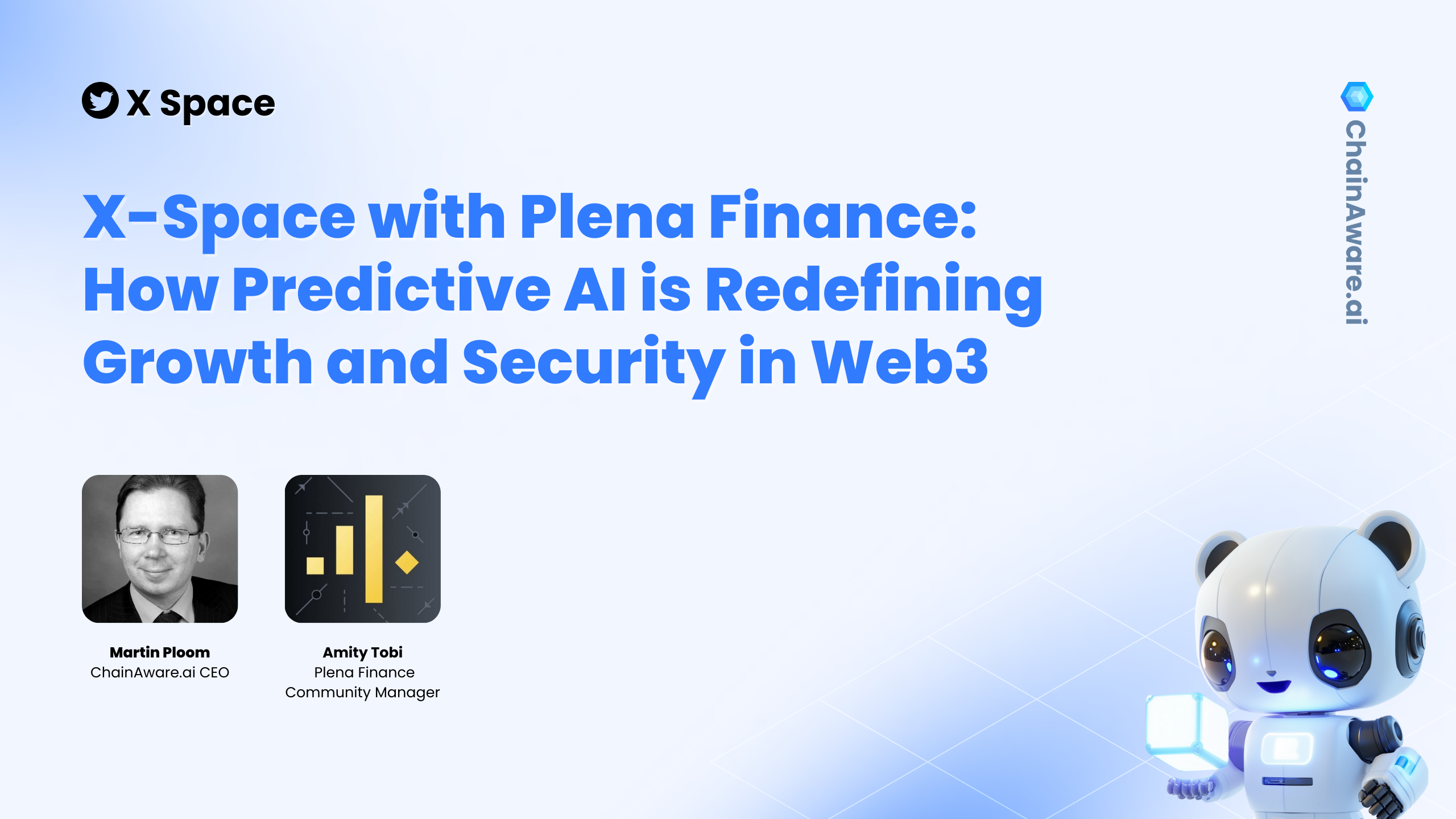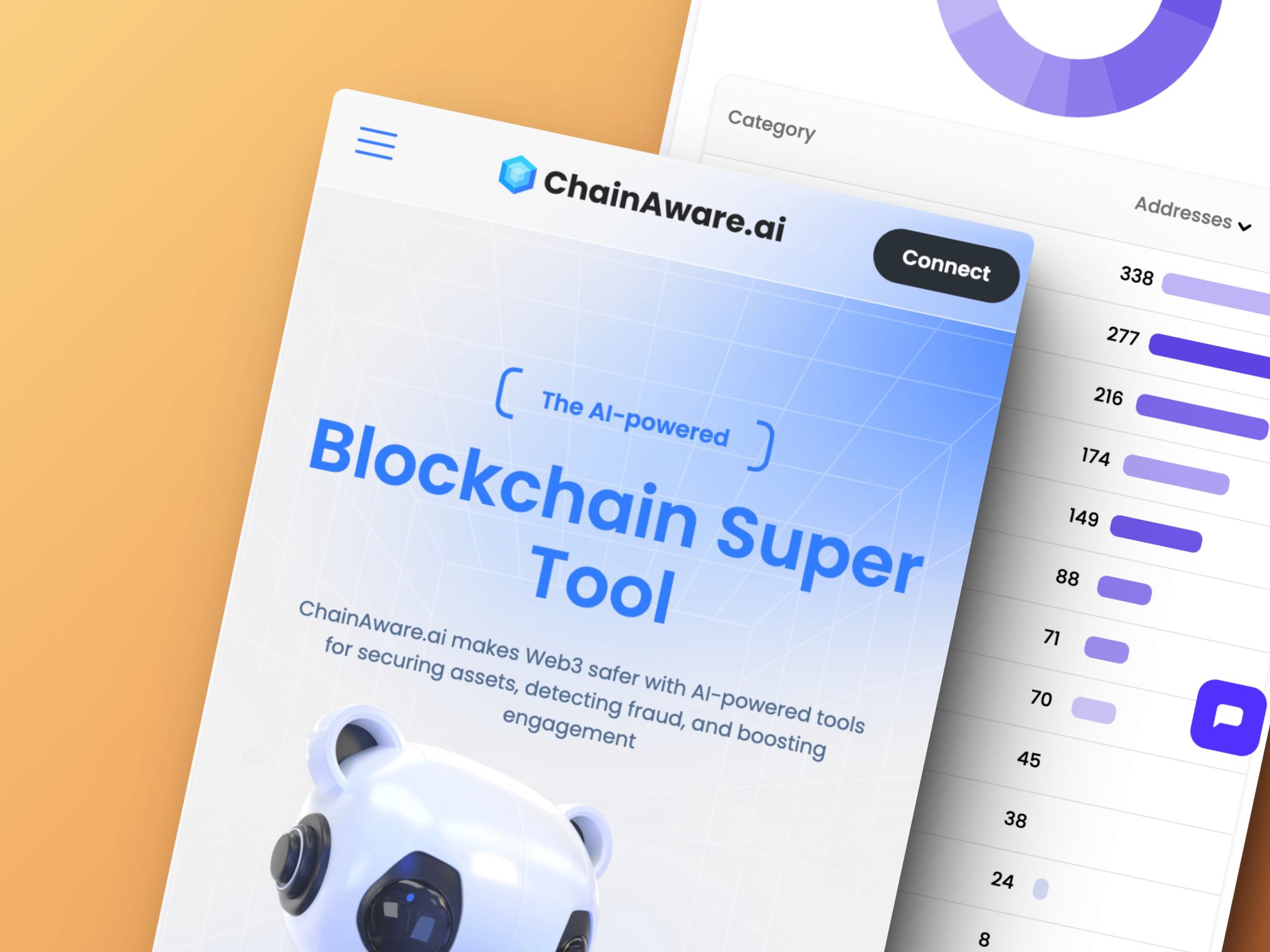Watch the full video: https://www.youtube.com/watch?v=KtAEI67yg8Y
1. Introduction: Web3 AdTech and Customer Acquisition
The discussion starts with the concept of using AI-based AdTech to improve customer acquisition in the Web3 space. The focus is on how AI and machine learning can help optimize the process of acquiring new users, which is essential for generating revenue in Web3 projects. The speakers highlight the need for innovation in customer acquisition to overcome the challenges faced by Web3 businesses today.
2. Background of Speakers and Their Projects
Martin and Tarmo introduce themselves as co-founders of projects like SmartCredit.io and ChainAware.ai. Both have extensive backgrounds in AI, finance, and Web3. Their experience includes launching innovative products that have reshaped sectors like decentralized finance (DeFi) and fraud detection. They explain how their work in predictive algorithms for credit scoring and fraud detection laid the foundation for their current focus on AI-driven Web3 AdTech.
3. AI in AdTech: The Role of Predictive Algorithms
The conversation shifts to the role of AI in Web3 AdTech. The speakers explain how they use predictive algorithms to anticipate user behavior and intentions, such as whether a wallet will commit fraud or if a pool will experience a rug pull. These algorithms, which have a 98% accuracy rate, are key to understanding and predicting user intentions, which is crucial for effective customer acquisition.
4. Web2 vs. Web3 AdTech: A Comparative Analysis
A comparison is made between Web2 and Web3, particularly in how each handles customer acquisition. In Web2, AdTech is highly optimized, using machine learning and vast amounts of user data from sources like Google and Facebook to target users with personalized ads. This has resulted in low customer acquisition costs and high conversion rates, often reaching up to 30%. In contrast, Web3 faces significantly higher acquisition costs due to a lack of similar AdTech tools.
5. Challenges of Customer Acquisition in Web3
The speakers highlight the main challenge in Web3: extremely high customer acquisition costs. Acquiring a transacting user in Web3 can cost upwards of $1,000, compared to just $15–$20 in Web2. This disparity makes it difficult for Web3 companies to become profitable or even survive in the long term. The lack of effective targeting and personalization tools in Web3 contributes to this problem.
6. How Web2 AdTech Solved Customer Acquisition
Web2 solved the customer acquisition problem through the development of sophisticated AdTech, including intention-based marketing and adaptive user interfaces. These tools allow Web2 companies to bring the right users to their platforms and deliver personalized experiences that resonate with their intentions. As a result, Web2 companies have been able to achieve high conversion rates and low acquisition costs, driving massive profitability.
7. Adaptive User Interfaces and Intention-Based Marketing
Adaptive user interfaces are a key component of Web2 AdTech. These interfaces change dynamically based on user intentions, providing personalized messages that resonate with individual users. This creates a resonant user experience, which leads to higher conversion rates. The speakers argue that Web3 needs similar adaptive interfaces to reduce acquisition costs and increase user engagement.
8. Opportunities for AI in Web3 AdTech
Web3 offers unique opportunities for AI-based AdTech, especially due to the availability of high-quality, publicly accessible blockchain data. Unlike Web2, where companies must build complex data pipelines, Web3’s transparent nature allows for the easy collection and analysis of user behavior on the blockchain. This data can be used to predict user intentions with a high degree of accuracy, making it a powerful tool for customer acquisition.
9. Impact of Blockchain Data in Web3 AdTech
Blockchain data is seen as a superior source for predicting user behavior compared to Web2 data sources like search history or social media interactions. Financial transactions on the blockchain provide a clearer picture of user intentions because they involve real, thoughtful actions with associated costs (e.g., gas fees). This makes the data more reliable and accurate for building predictive models, giving Web3 AdTech a potential edge over Web2.
10. Conclusion: The Future of Web3 with AI-Based AdTech
The speakers conclude that the future of Web3 depends on its ability to implement AI-based AdTech to reduce customer acquisition costs. By leveraging blockchain data and predictive algorithms, Web3 can achieve even higher conversion rates than Web2, potentially reaching 40–45%. This will allow Web3 companies to scale, become cash-flow positive, and compete effectively with Web2. The adoption of AI-driven AdTech in Web3 is seen as the key to crossing the chasm and bringing Web3 into the mainstream.

